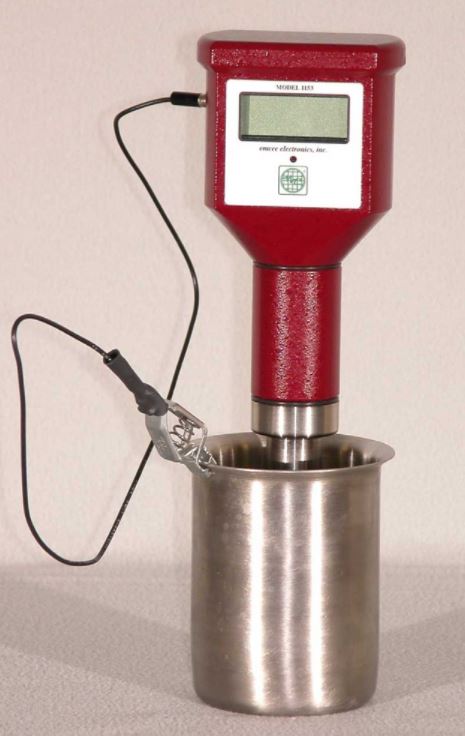Model 1153 Digital Conductivity Meter
คุณสมบัติสินค้า:
SKU : SR-M002
เครื่องวัดค่าการนำไฟฟ้า Model 1153 Digital Conductivity Meter (ASTM Standard Test Method D2624 included in Specifications D975, D1655, and D7566)
Share

- Continuous standard electrical conductivity range from 1 to 2,000 picosiemens per meter (pS/m)
- Available in other conductivity ranges (from 2000 - 10M pS/m)
- LED illuminates during automatic test cycle (3 seconds)
- Temperature measured and displayed in Celsius and Fahrenheit
- Data stored (non volatile) until next test cycle is performed
- Hermetically sealed
- Text presentation of operational status
- Automatic over range and low battery indications
- Single pushbutton operation
- Digital, liquid crystal display
- Powered by 3 standard lithium cells
- Approved intrinsically safe design for use in hazardous environments by Underwriters Laboratories (UL) U.S., (UL) Canada and LCIE (Europe)
Applications
The Model 1153 Digital Conductivity meter provides a measurement of electrical conductivity of fluids in conductivity units (CU), which are defined as picosiemens per meter in ASTM D 2624. The rugged Electro/mechanical design of the Model 1153 meter facilitates ease of use for both laboratory and field applications. Initially the meter was designed and developed for safety reasons to measure the electrical conductivity of hydrocarbon fuels, particularly jet fuels. Additional pre-amp versions are available to accommodate measurement of a variety of fluids for use in many different applications.
Safety
Hydrocarbon fuels typically have low electrical conductivity, and consequently, are susceptible to retaining a static charge. Static charges are induced, especially, when the fuel is pumped at high rates through filters. Due to the relatively low conductivity, the static charge does not readily dissipate and is retained for a considerable period of time. This condition can result in an explosion and/or fire. Since conductivity can vary with temperature, it is very important to record the fuel temperature at which the measurement was performed.
Process Controls
In addition to safety reasons, electrical conductivity of fluids can be monitored for process control. Proper addition and mixing of various ingredients can be monitored at different stages of production.
These applications are not limited to hydrocarbons but have been expanded to other products; such as paints, solvents, inks, and other non-organic items.
Theory of Operation
The EMCEE Model 1153 meter consists of an electronics assembly and a stainless steel probe. The probe, which is similar to a capacitor having concentric electrodes, is immersed in the fluid up to the set of holes closest to the electronics assembly. During the read cycle a relatively small direct current flows through the fluid between the electrodes. The current is amplified in the electronics assembly and is displayed on the liquid crystal display in picosiemens per meter (pS/m). This data is then stored in non-volatile memory and can be retrieved until the next read.
สินค้าเกี่ยวข้อง
Powered by
MakeWebEasy.com



